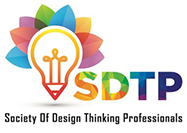Innovation is the secret ingredient that keeps the cycle of progress and success going. We all experience problems in our day-to-day lives, these problems lead to the conflict of ideas, which further convert into creativity.
Finally, when there is a scope for enhancement or betterment in solving problems, this scope brings Design Thinking into the picture.
Design Thinking does not exclusively apply in our professional lives but it also touches the chords of our personal lives. If there hadn’t been innovation in art, we wouldn’t have experienced the rapid digital adoption of fine arts.
The Cleveland Museum of Art, for example, has integrated its online collection of over 61,000 artifacts with Slack to develop a daily ‘gamified’ exhibition enabling millions of Slack subscribers to participate in art that suits their mood, the season, or the events of the day.
Design Thinking is being taught at prominent colleges across the world, including MIT, Stanford, and Harvard, and some of the world’s biggest corporations, such as Apple, Google, Samsung, and GE, have quickly adopted the methodology.
Invention vs. Innovation

The word “innovation” is frequently popularized and connected with growth, potential, and the mentality to achieve more and do better, whether in technology, research, or even humanitarian groups.
Invention: The physical development of a new thought or idea is known as Invention. The development of a concept for doing or making something without first confirming that it works or is commercially worthwhile. Invention is impossible without creativity, but creativity alone is insufficient to effectively develop an idea.
Uber, for example, used innovation to create a strong and functional business model based on the concepts it had developed during the creation stage.
Innovation: In business, innovation binds everything together. Innovation, according to British Standards, is the successful application of new ideas. It entails commercializing an invention and advocating its widespread use.
Uber, for example, has become a model of modern operational innovation. Its excellent marketing and use of mobile technologies have provided a simple answer to chaotic transportation issues, and the company’s rapid global rise is remarkable.
The difference between innovation and invention lies in their essence and application. Invention creates something new, while innovation improves or builds upon something that already exists. Both are crucial for progress, however, they serve different purposes.
What Is Design Thinking Concept?

Design Thinking is an iterative process that helps us understand better the problems, the users, and the challenges in the way of designing something new and attempting to redefine the problems by quoting alternative solutions and strategies that might come out polished after going through a series of trials. Design Thinking offers a problem-solving strategy based on solutions. It is both a way of thinking and working as well as a set of practical techniques.
When explaining what is Design Thinking in simple words, it involves understanding users by gaining deep insights into their needs and experiences, defining problems clearly, ideating a wide range of possible solutions, prototyping scaled-down versions to explore their viability, and testing these prototypes with users to gather feedback and refine the solutions.
When you apply Design Thinking, you hold the fort together of what’s desired from a human standpoint with what’s technologically and economically practical. It also enables people who aren’t designers to use creative tools to solve a wide range of problems. Taking appropriate measures and the right approach to the right questions are the lead steps in the process. It’s all about adopting basic attitude modifications and approaching things from a different perspective.
Design Thinking proves to be a boon for you, your team, or your organization.
- Once you apply Design Thinking to any project, you can understand the needs of your users.
- You can give way to creativity while launching new ideas, services, or products without any risk.
- You can learn and repeat to better the process.
- You can generate incremental as well as revolutionary solutions.
It can be applied to any function or industry. It may help you build new solutions based on the needs of your clients, whether you work in industry, government, education, or nonprofit.
How To Tackle “Wicked Problems” With Design Thinking?

The peculiarity of Design Thinking resides in the way it helps you to look at the problem. It is not about regular, common problems with time-tested solutions, but the problems that can be tackled with Design Thinking. It is about exceedingly complex, “wicked” problems that defy traditional methods and approaches to address.
Not only are these problems difficult to articulate, but any attempt to solve them will almost certainly result in the creation of new ones. You may find wicked problems anywhere, ranging from global issues like poverty and climate change to obstacles that affect practically every organization, such as attaining sustainable growth, change management, and retaining your competitive advantage. One wicked problems example is climate change, where efforts to reduce carbon emissions may create new challenges in energy production and economic impact.
When it comes to solving the most twisted problems around this globe, people turn to the actionable approach of Design Thinking. By applying this methodology, organizations can effectively tackle wicked problems and drive meaningful change.
What Is The SDTP Way Of Design Thinking?

We, at SDTP (Society of Design Thinking Professionals), think that ‘Design’ is the psychological process that leads to the desired outputs; the agreements, disagreements, iterations, insights, discoveries, and analyses; in short, the focused chaos.
When we first started applying Design Thinking to real-world problems at SDTP, we noticed several loopholes in the framework. For instance, the word ‘needs’ is a hazy, ambiguous, fluffy jigsaw piece of information that is left to the perception of the beholder! However, needs can’t be interpreted in any way. It must have logical, quantifiable, controlled, tangible, unambiguous, and error-free semantics.
It is where we, at SDTP, brought into light the three Design Thinking pillars that act as our core guiding principles for Design.
- A finite set of Users (50 to 100)
- Focus on user-centric outcomes
- Infinite pivots
The methodology we use to achieve this is the DART way of Design Thinking
D – Discover
A – Analyze
R – Reflect
T – Test
Discover
This phase focuses on uncovering the habits of the users to better understand their needs. It is imperative to identify the target audience before getting further with the process. In this phase you need to observe your users, to record their physical manifestations of experiences. These observations will give you insight, and these insights will lead you to create innovative solutions.
Analyze
After you’ve seen and observed your users, you’ll need to extract and synthesize your findings into pressing requirements and insights before moving on to a specific and relevant issue. It’s transitioning from flare to focus. Based on your analysis, you should be able to generate a thorough grasp of your users and the design space, as well as an actionable problem statement: your point of view.
Reflect
The resolution of your prototype should be proportional to your project’s progress. Keep your prototypes rough and quick during early explorations so you can learn quickly and investigate a variety of options. In this step, we get stuck in a loop for continuous reflections to test functionality and other non-exclusive categories:
- Rediscovering: Even in the pre-solution phase of your project, creating a prototype provides you with a deep understanding of the design space and your user.
- Exploration: Construct to think. Create a variety of solution possibilities.
- Testing: Prototypes (and context development) are created to test and refine solutions with consumers.
- Inspiration: Showing your vision can inspire others (coworkers, clients, customers, and investors).
Test
We test to refine our prototypes and solutions. It helps to inform future prototype iterations. You can go back to using a drawing board for this phase. It enables us to gain a better understanding of our users. Testing is another way to learn and rediscover through observation and participation, and it frequently offers unexpected results.
So, for us, Design Thinking is the process of having continuing conversations with users to understand their duties, establish “what qualifies as the success criteria for the jobs to be completed successfully,” and come up with solutions that resolve the problem! That has now become the main point for the generation of value.
What Is The Stanford Way Of Design Thinking?

Design Thinking phases or principles have been proven to help considerably increase the success rate for innovation by several of the world’s greatest firms, including Infosys, General Electric, IBM, and Lego.
“A discipline that uses the designer’s sensibility and methods to match people’s needs with what is technologically feasible and what a viable business strategy can convert into customer value and market opportunity,” says Tim Brown, CEO of IDEO, the design firm that brought the term Design Thinking to the limelight.
By relying on insight acquired from real-world experiments rather than historical data or market research, the Design Thinking discipline aims to eliminate the ambiguity and risk associated with innovation. Empathize, Define, Ideate, Prototype, and Test are the five stages of this nonlinear process.
Empathize
It is important to grasp the sympathetic angle of the problem you want to solve, and you can find it through user research. Empathy is essential in a human-centered design approach like Design Thinking because it helps you to put your perspective aside and acquire meaningful insight into consumers and their needs.
Define
In this phase, you need to compile the data obtained from the first phase. Then you examine and synthesize your findings to define the fundamental issues you and your team have uncovered. You define them as problem statements. You can use personas to keep your efforts focused on people.
Ideate
You’re now prepped and ready to start brainstorming during the ideating phase. As you have a strong foundation of information from the prior two phases, you can begin to think of something unique, look for new perspectives on the problem, and come up with creative solutions to the problem statement you’ve established. Brainstorming is especially effective in this phase.
Prototype
This is the start of a testing period. Prototyping aims to find a reliable solution to the problem incurred. To test the concepts you’ve established, your team should create several low-cost, scaled-down variants of the product (or specific functionality present within the product). It is a simple process that can also be a blueprint on paper.
Test
The prototypes are thoroughly tested by evaluators. Although this is the end of the process, Design Thinking is iterative: teams frequently use the outcomes to reframe one or more problems. As a result, you can go back to earlier phases to make more rounds, changes, and refinements – or to rule out alternate approaches.
It is now clear that these five phases/principles altogether contribute to the entire Design Thinking model. However, sometimes the steps might not fall in a sequential pattern, they are circular.
Conclusion
As a tool to stimulate innovation and teamwork, Design Thinking is increasingly being incorporated into the business. IBM created the Enterprise Design Thinking model to “assist multidisciplinary teams in aligning around the real needs of their users,” claiming that companies that use it are twice as quick to bring products to market, 75 percent more efficient in terms of teamwork, and see a 300 percent return on investment.
In case you are curious to know more about the SDTP way of Design Thinking, then you can go to the link below to explore more:
https://notionpress.com/read/design-thinking-playbook-for-practitioners
Image source:
https://miro.medium.com/max/1838/1*pk0BCFC_SlT5kAIeqCnKKA.jpeg
https://d1m75rqqgidzqn.cloudfront.net/wp-data/2020/10/06112737/shutterstock_506738677.jpg
https://assets.entrepreneur.com/content/3×2/2000/20180311161055-shutterstock-366261593.jpeg
https://www.milezero.io/wp-content/uploads/2020/05/Design-Thinking.jpg









